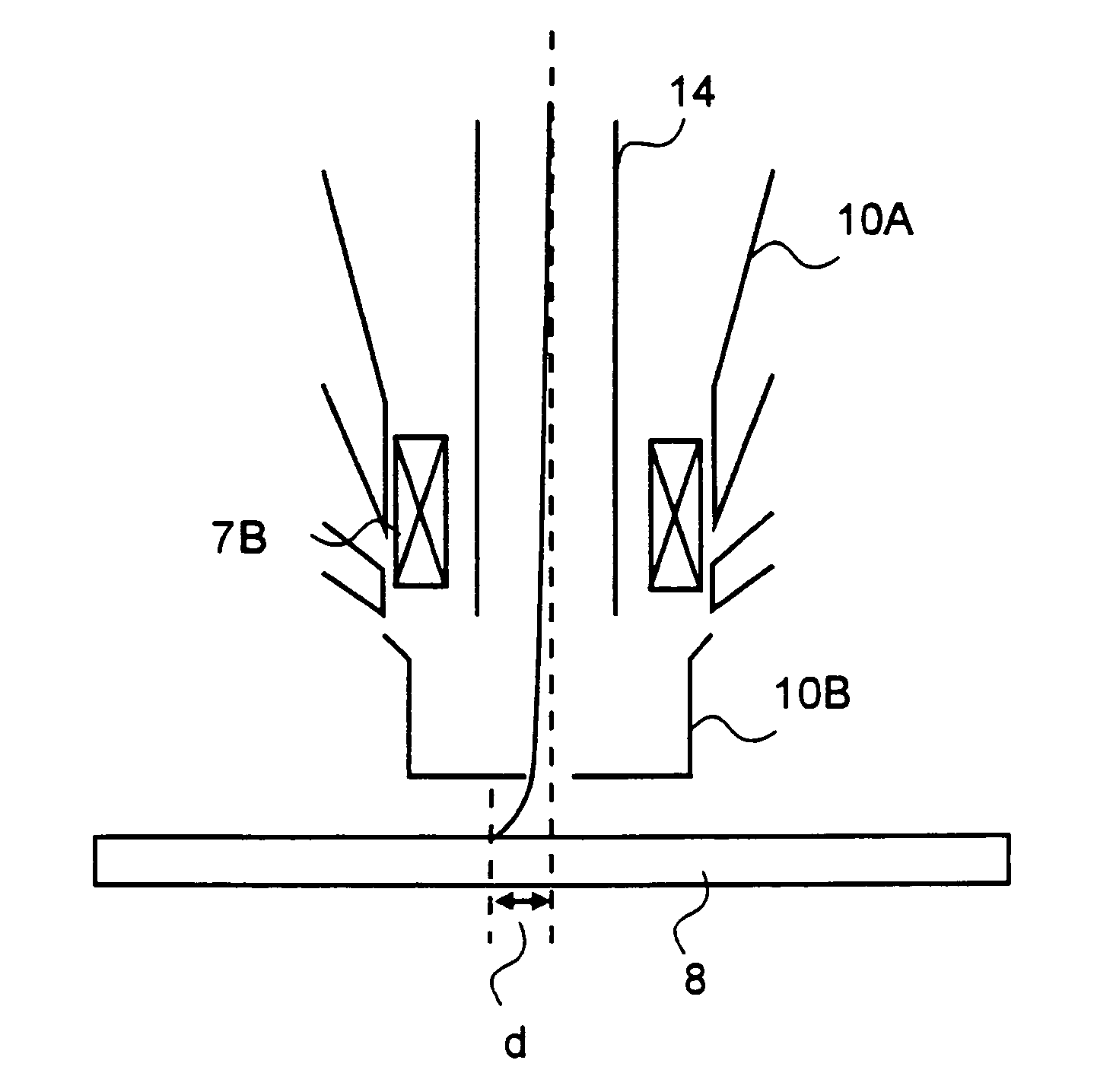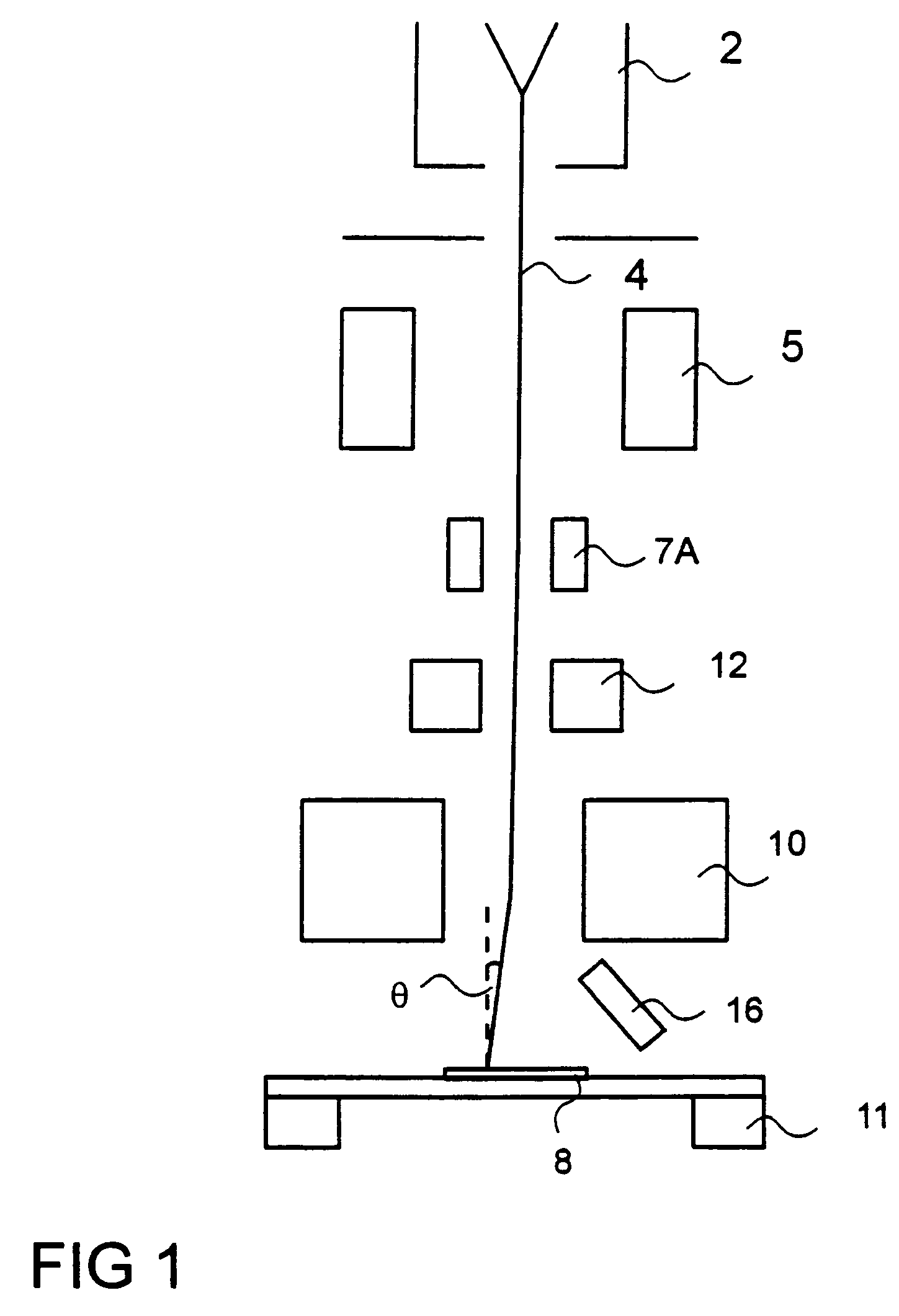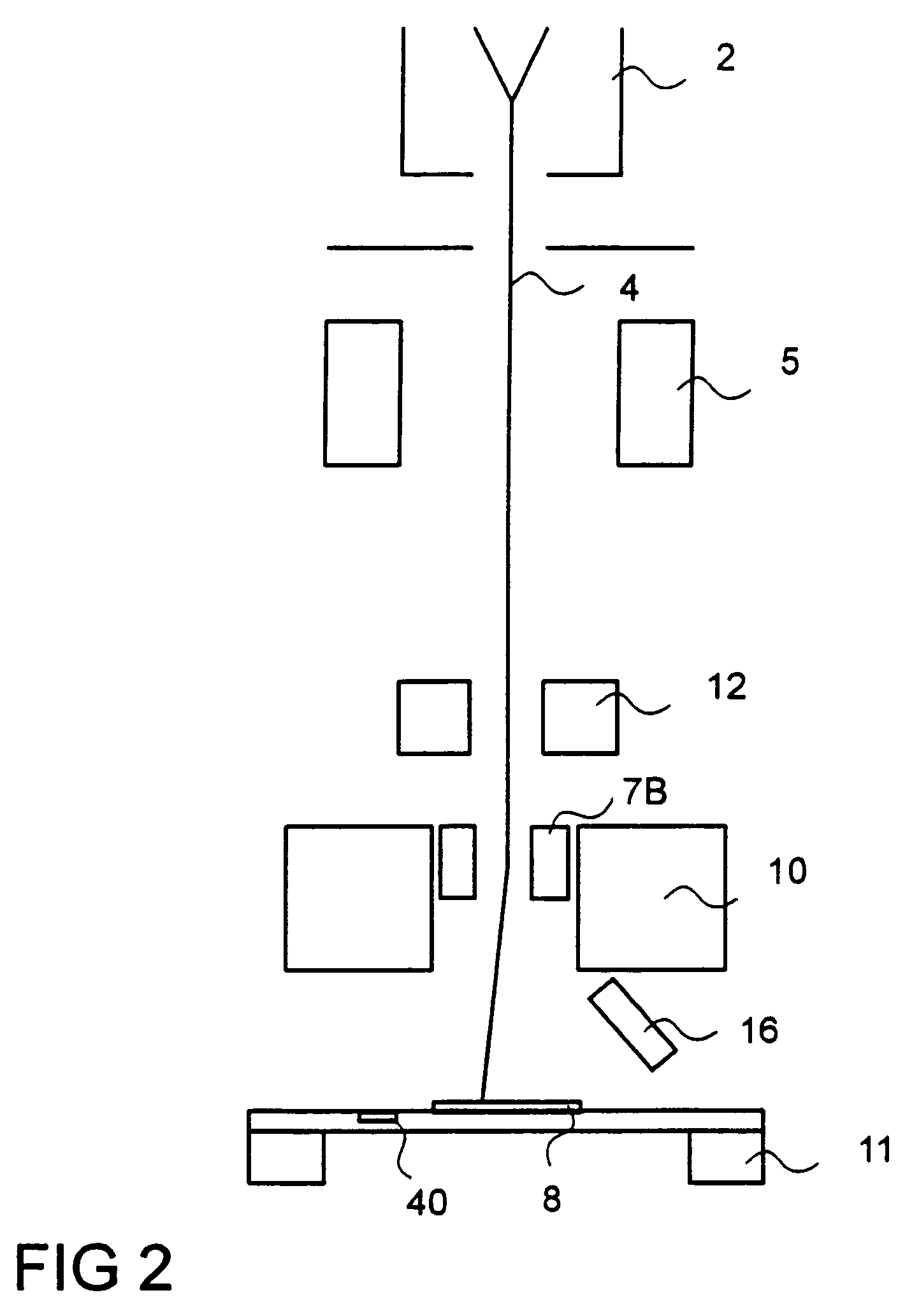Method and system for the examination of specimen
a specimen and system technology, applied in the field of specimen examination, can solve the problems of inability to provide accurate critical dimensions, accurate height or edge width measurements without the need of massive manual interference, and inability to accurately register the elements of a stereo image pair, so as to achieve the effect of reducing the number of specimens, and reducing the amount of specimens
- Summary
- Abstract
- Description
- Claims
- Application Information
AI Technical Summary
Benefits of technology
Problems solved by technology
Method used
Image
Examples
Embodiment Construction
[0024]Preliminary, it should be appreciated by those skilled in the art that the present invention can be used with any charged particle device. However, for convenience the invention will be described with respect to its implementation in a scanning electron microscope (SEM). A preferred embodiment according to the invention is shown schematically in FIG. 1. The basic components of the device are an electron source 2, a lens system (condenser lens 5 and objective lens 10), scanning coils 12, beam shift coils 7A and a detector 16. In operation an electron beam 4 is emitted from the electron source 2. The electron source may, for example, be a tungsten-hairpin gun, a lanthanum-hexaboride gun, or a field-emission gun. The electrons are accelerated by an accelerating voltage supplied to the electron source 2. Since the beam diameter produced directly by the electron source usually is too large to generate a sharp image at high magnification, the electron beam 4 is guided through the co...
PUM
| Property | Measurement | Unit |
|---|---|---|
| angle of incidence | aaaaa | aaaaa |
| energy | aaaaa | aaaaa |
| distance | aaaaa | aaaaa |
Abstract
Description
Claims
Application Information
 Login to View More
Login to View More - R&D
- Intellectual Property
- Life Sciences
- Materials
- Tech Scout
- Unparalleled Data Quality
- Higher Quality Content
- 60% Fewer Hallucinations
Browse by: Latest US Patents, China's latest patents, Technical Efficacy Thesaurus, Application Domain, Technology Topic, Popular Technical Reports.
© 2025 PatSnap. All rights reserved.Legal|Privacy policy|Modern Slavery Act Transparency Statement|Sitemap|About US| Contact US: help@patsnap.com



